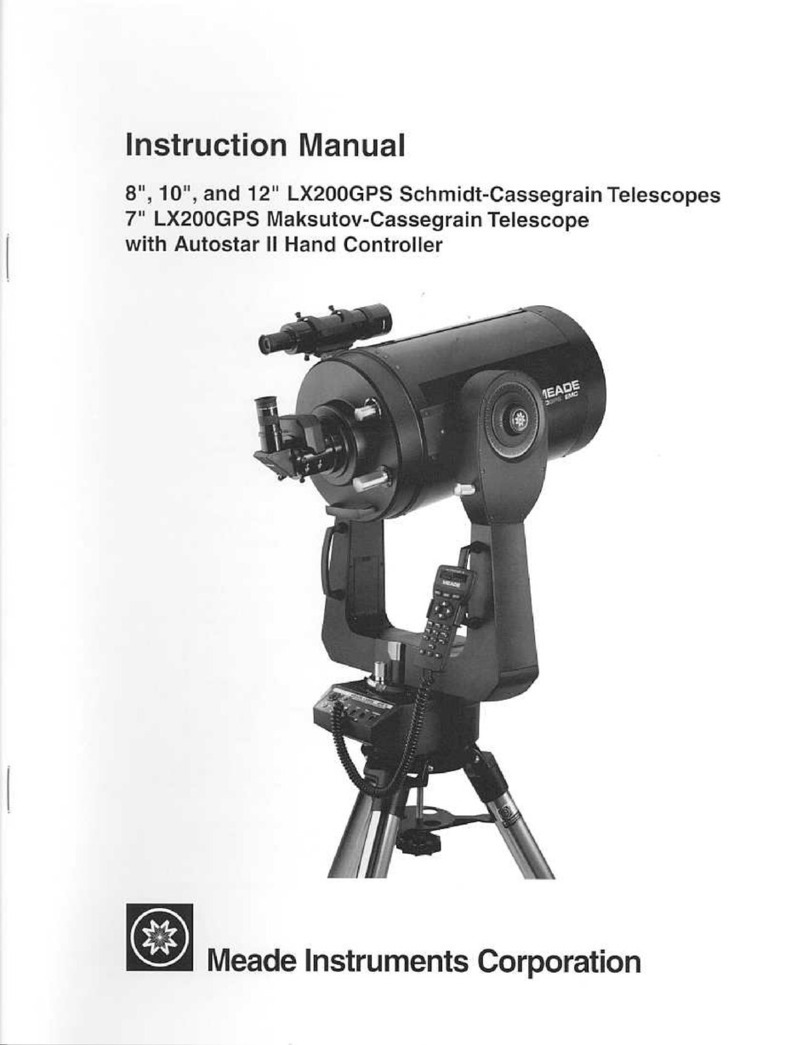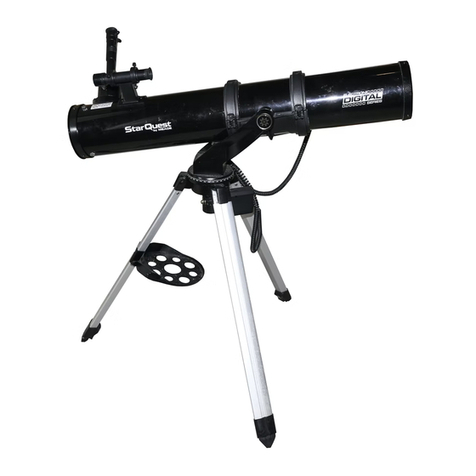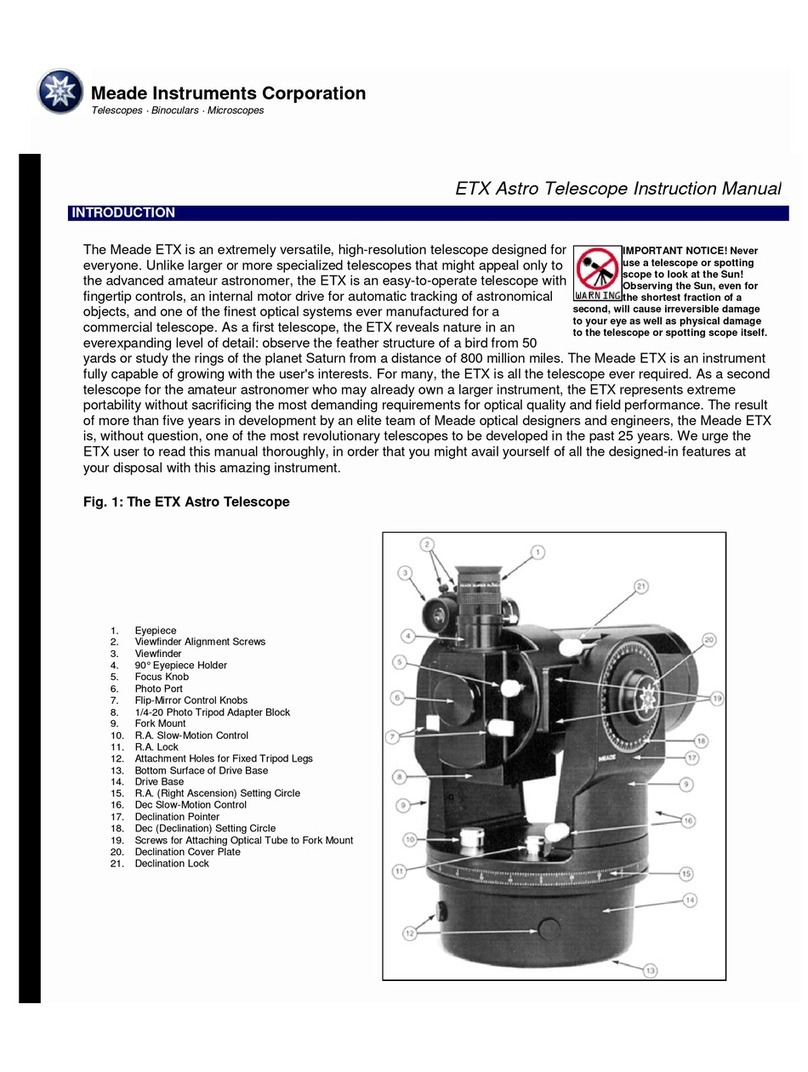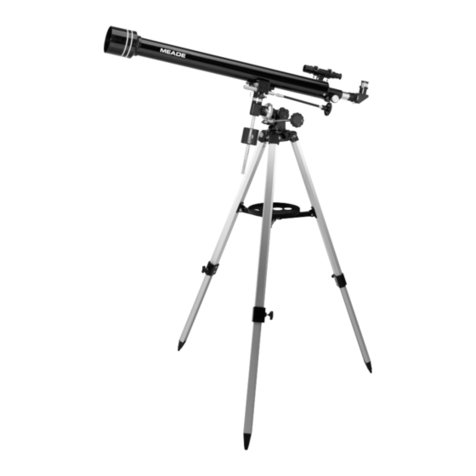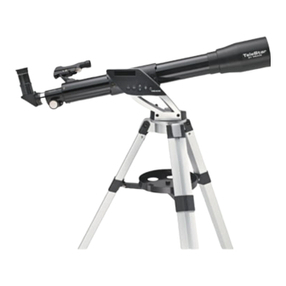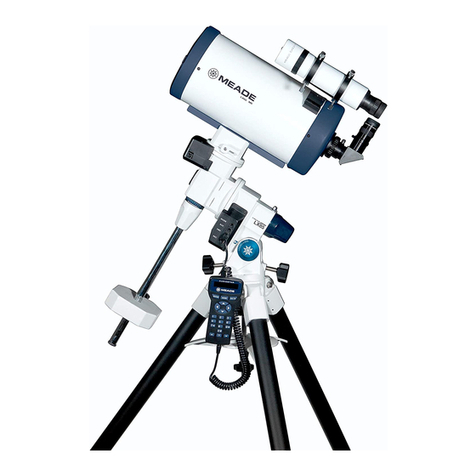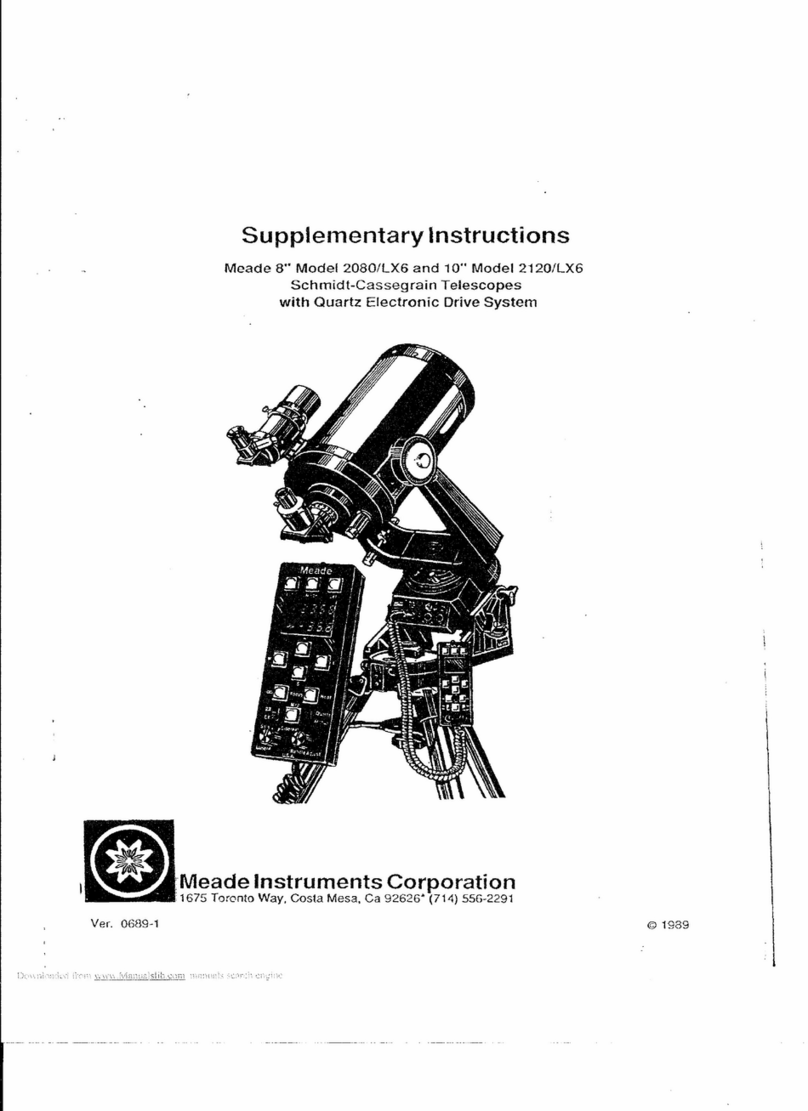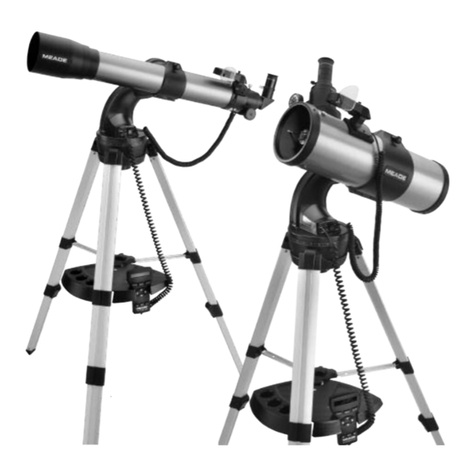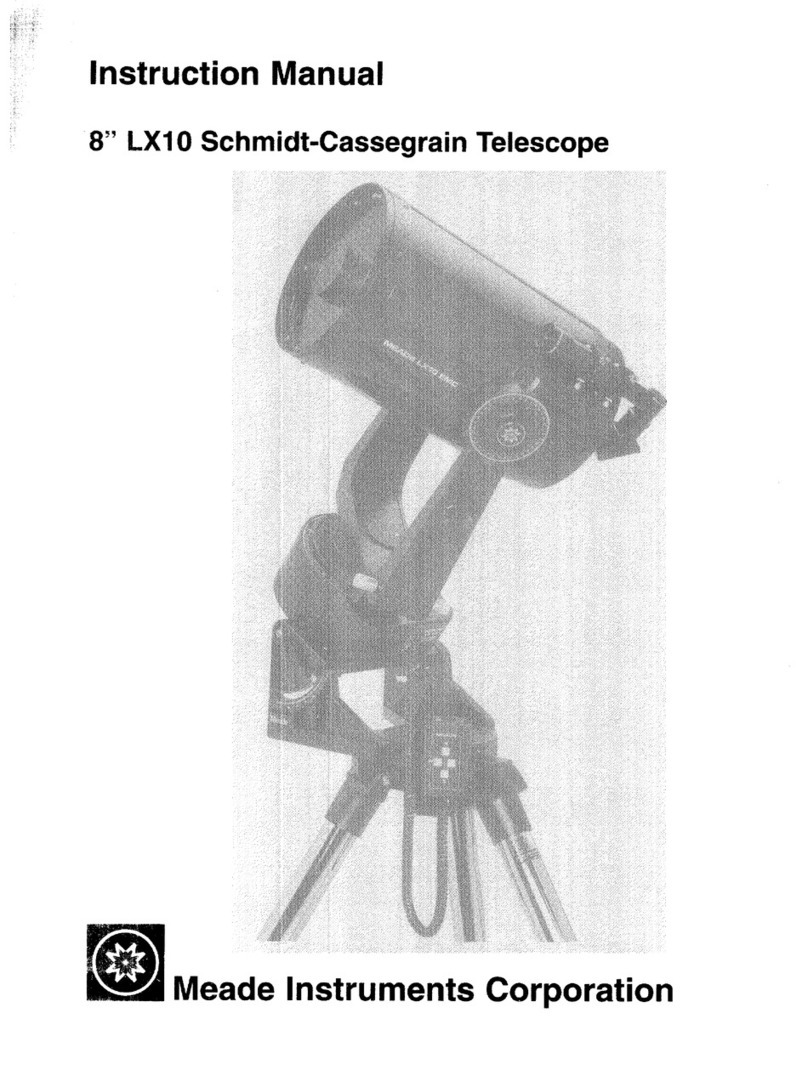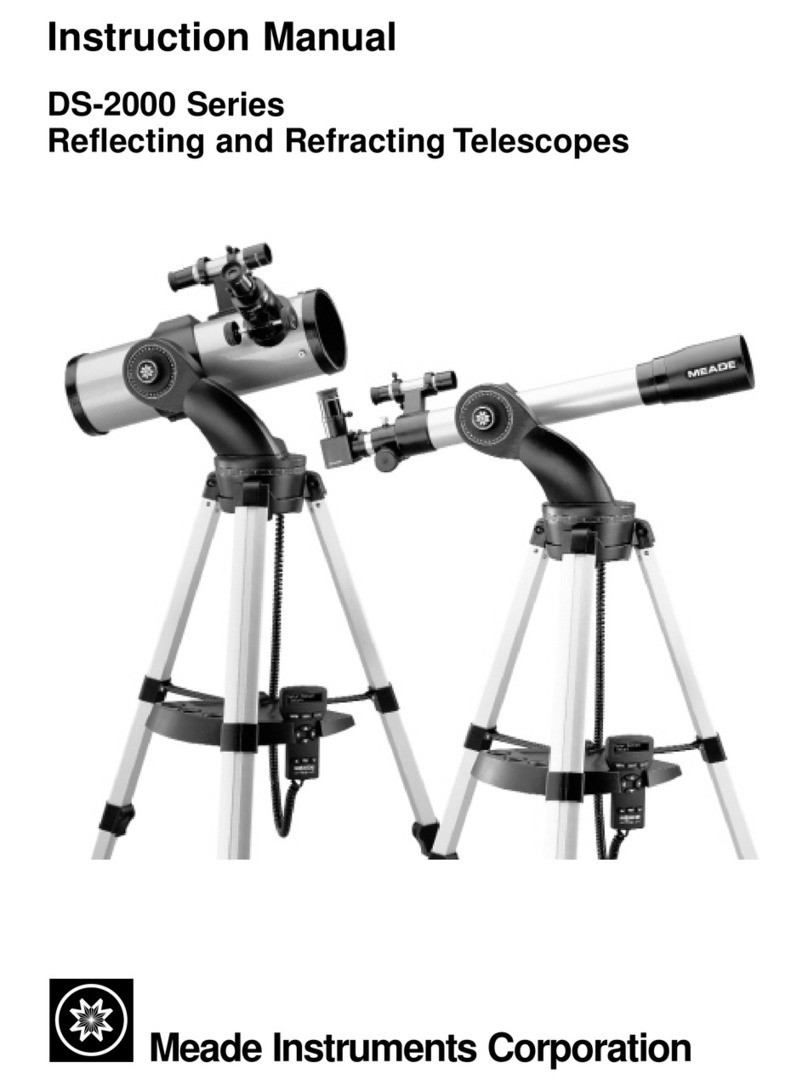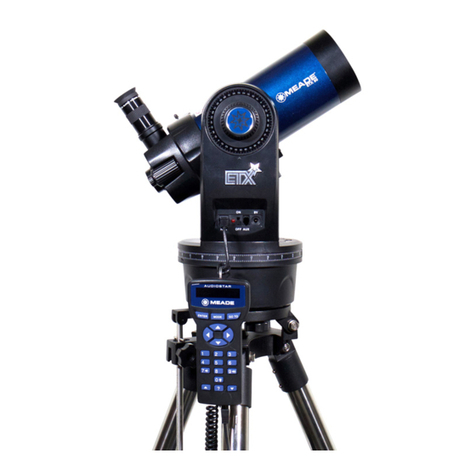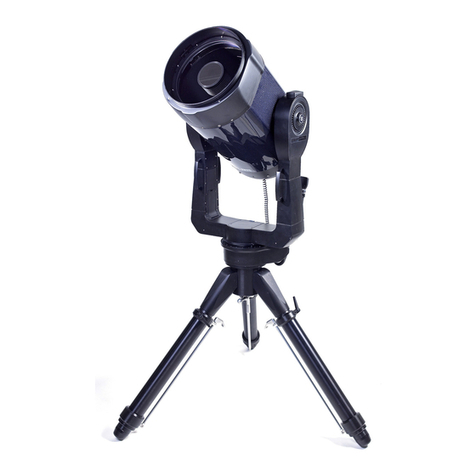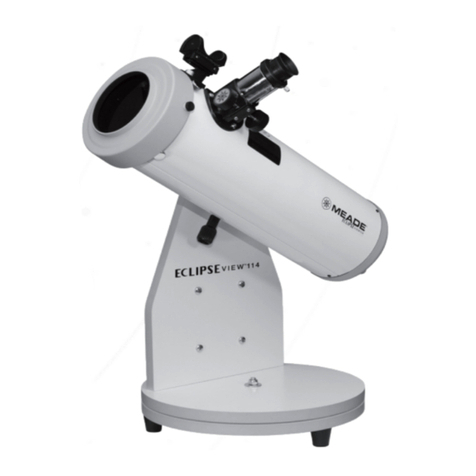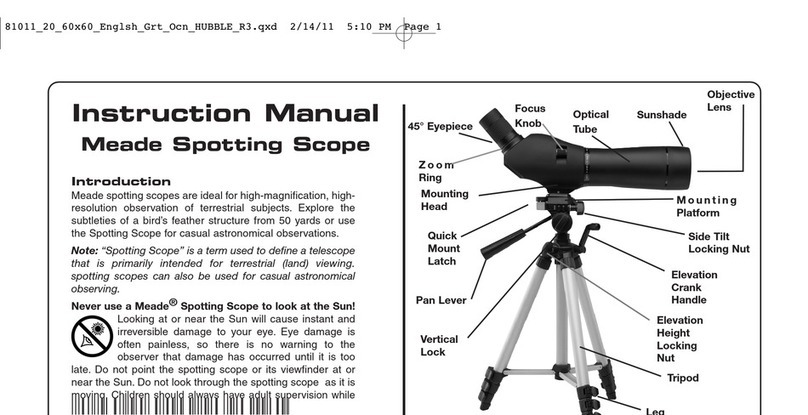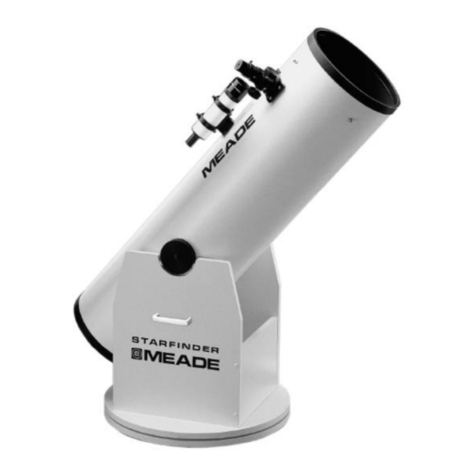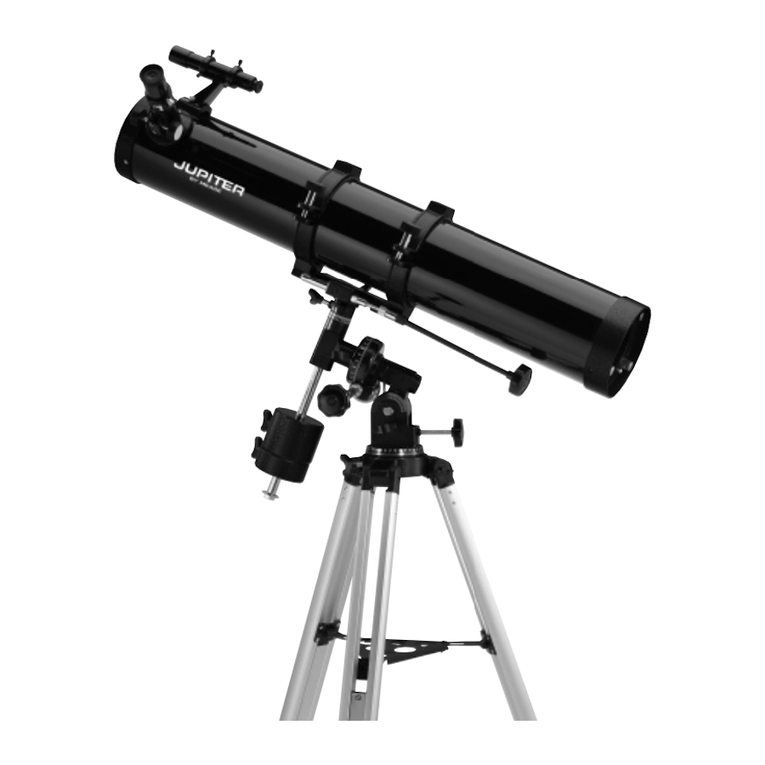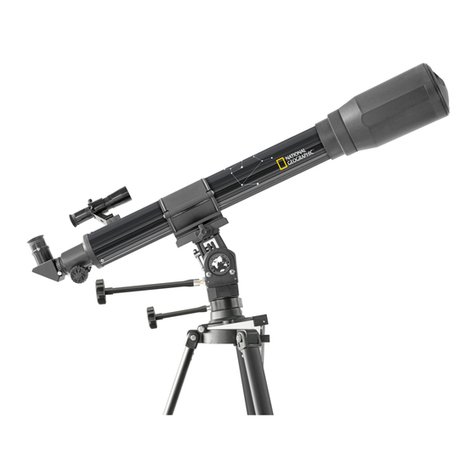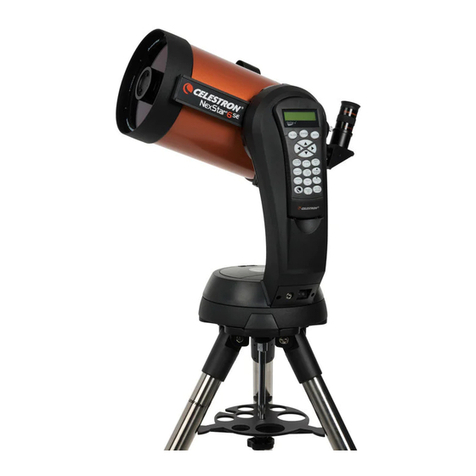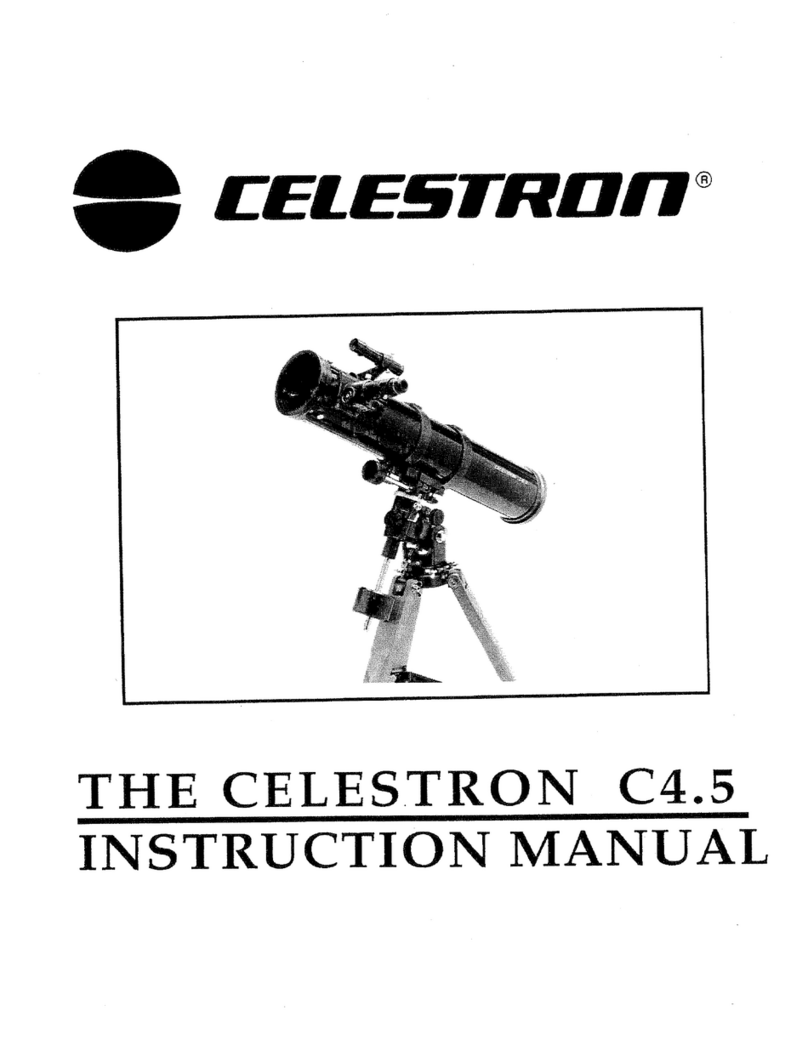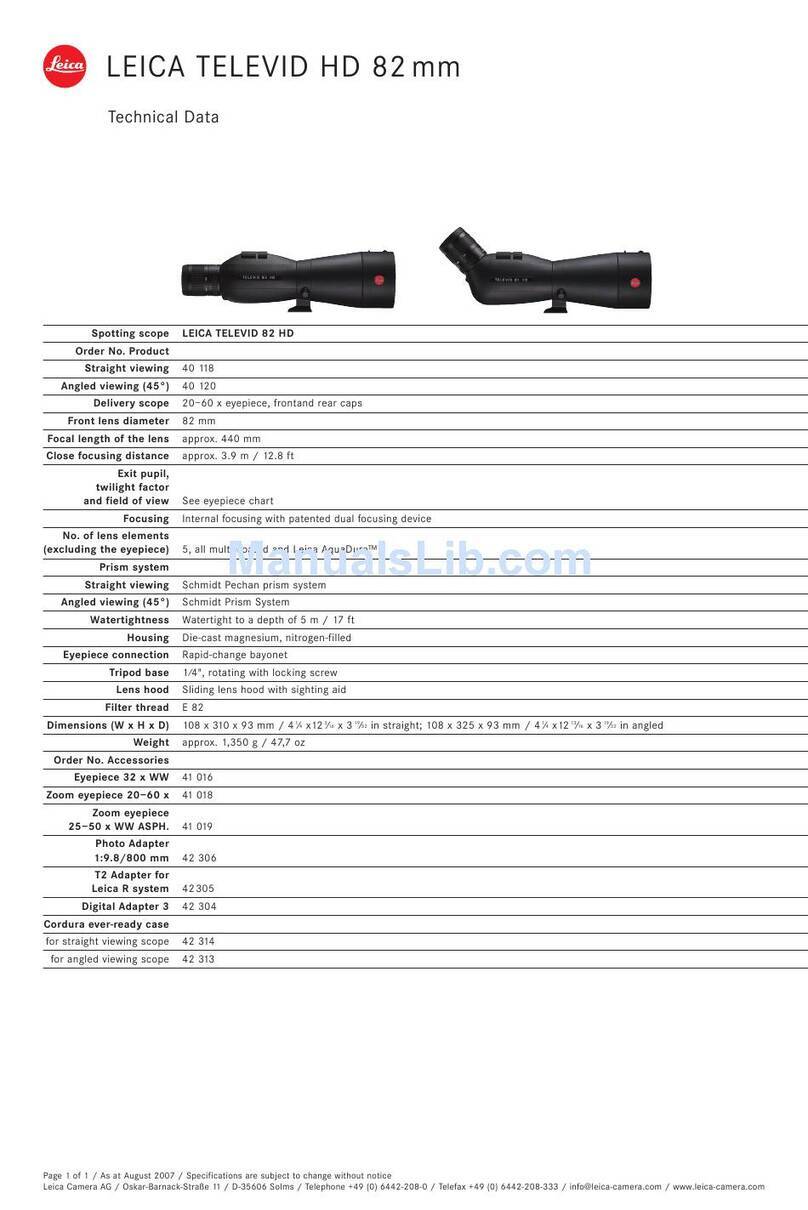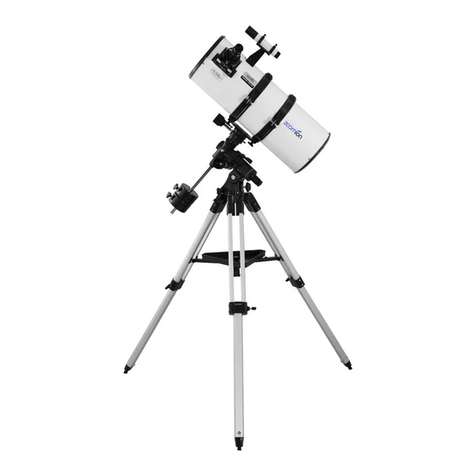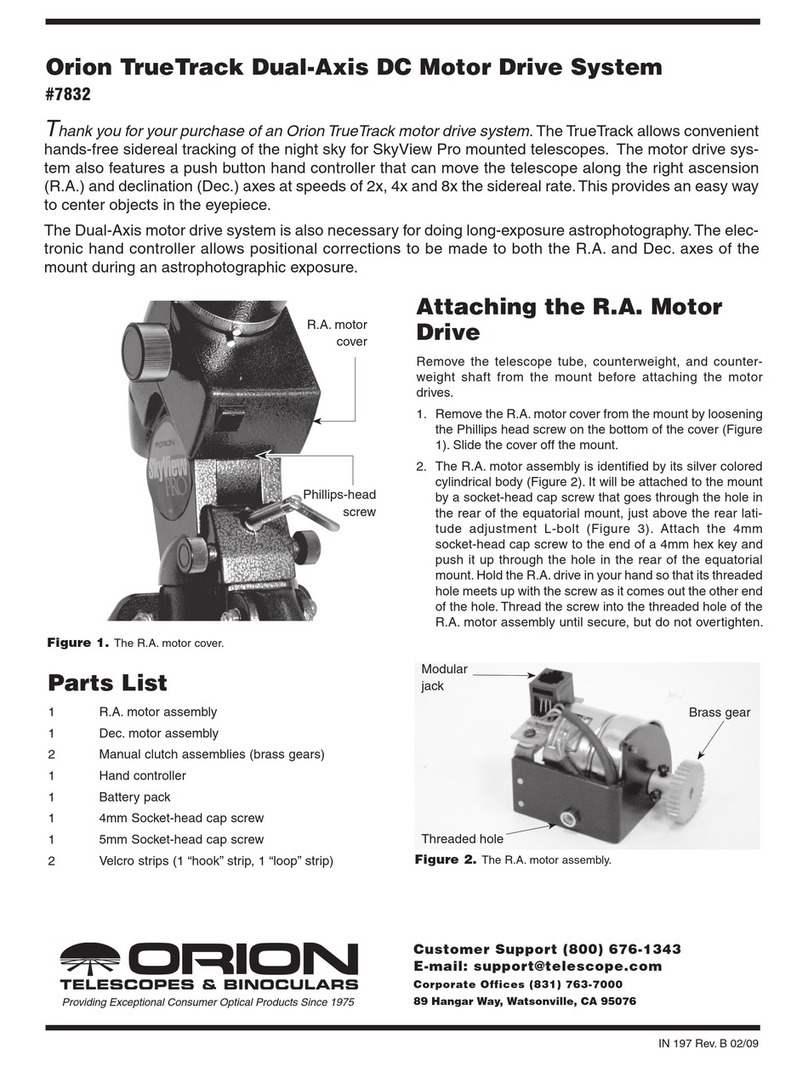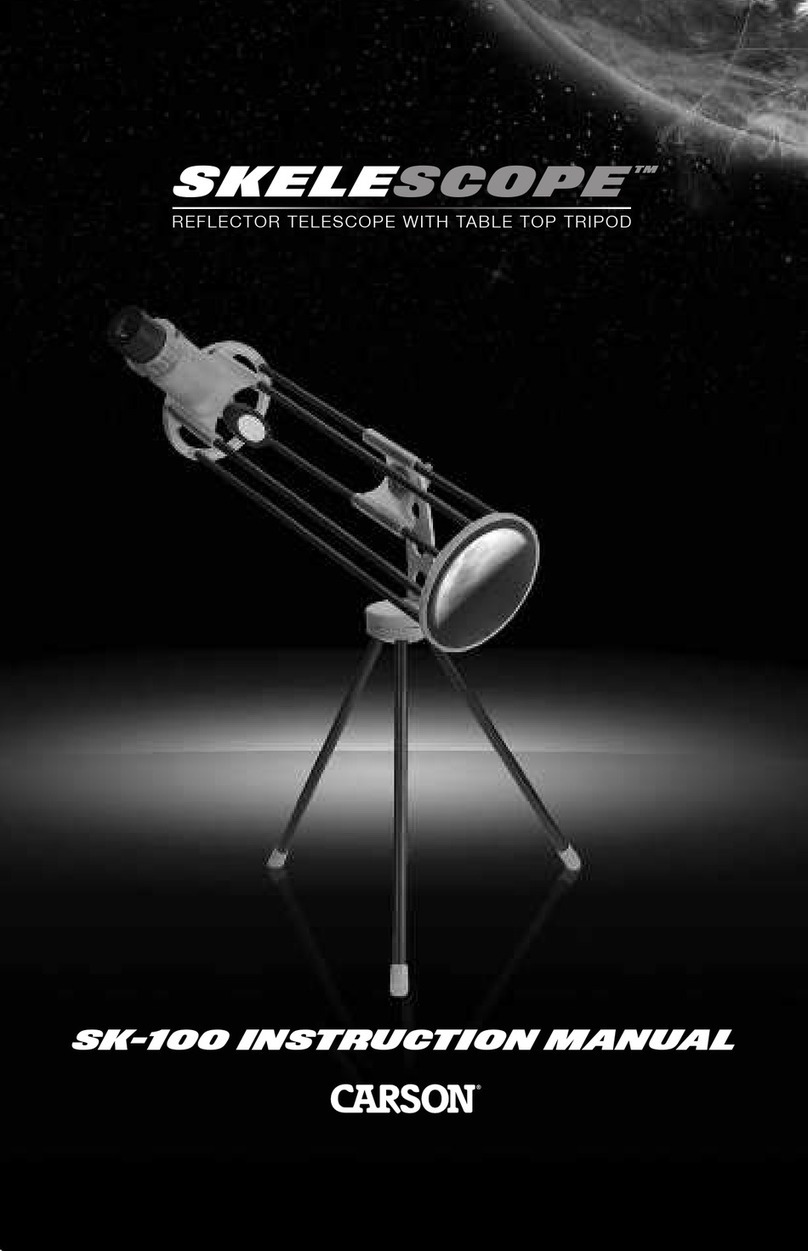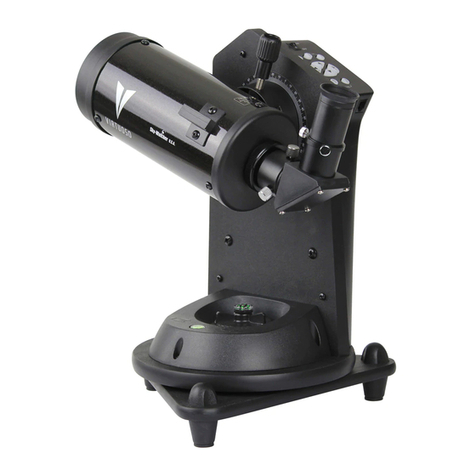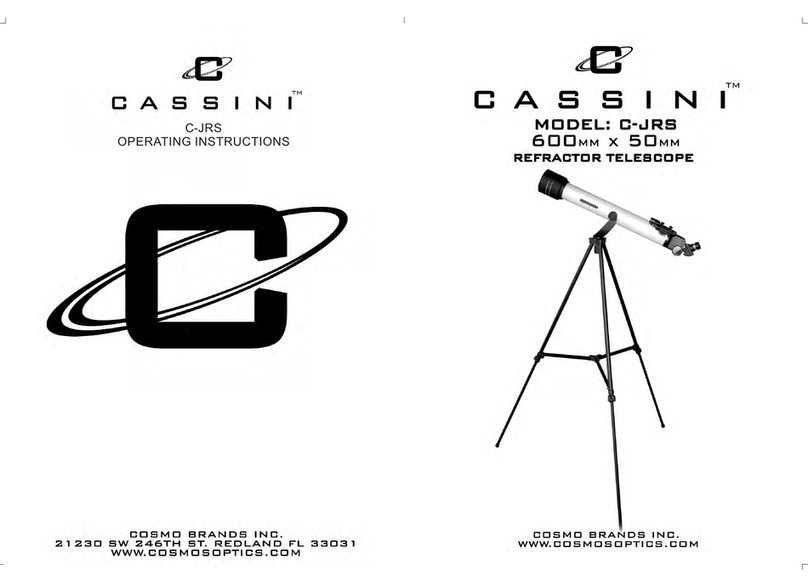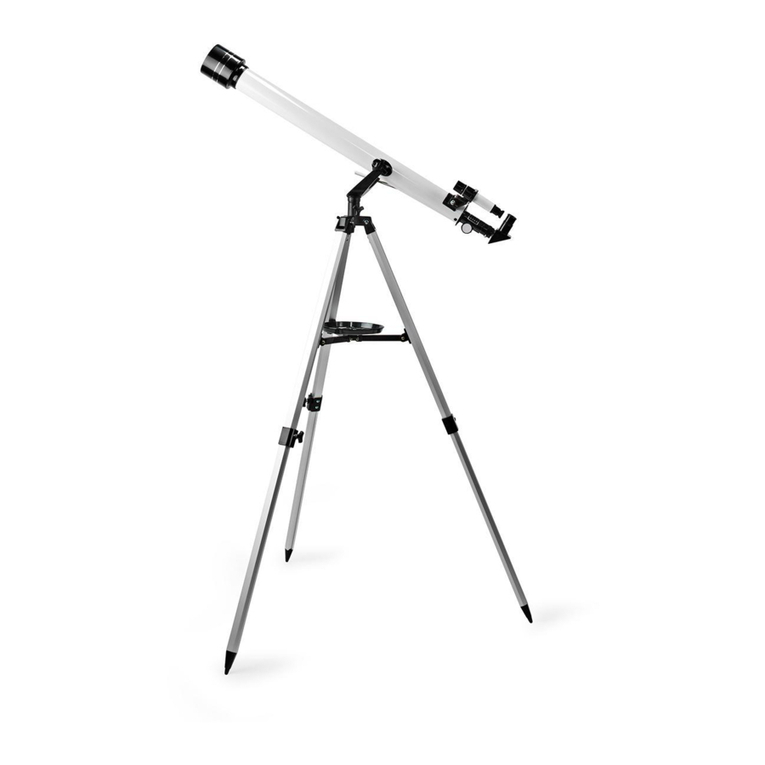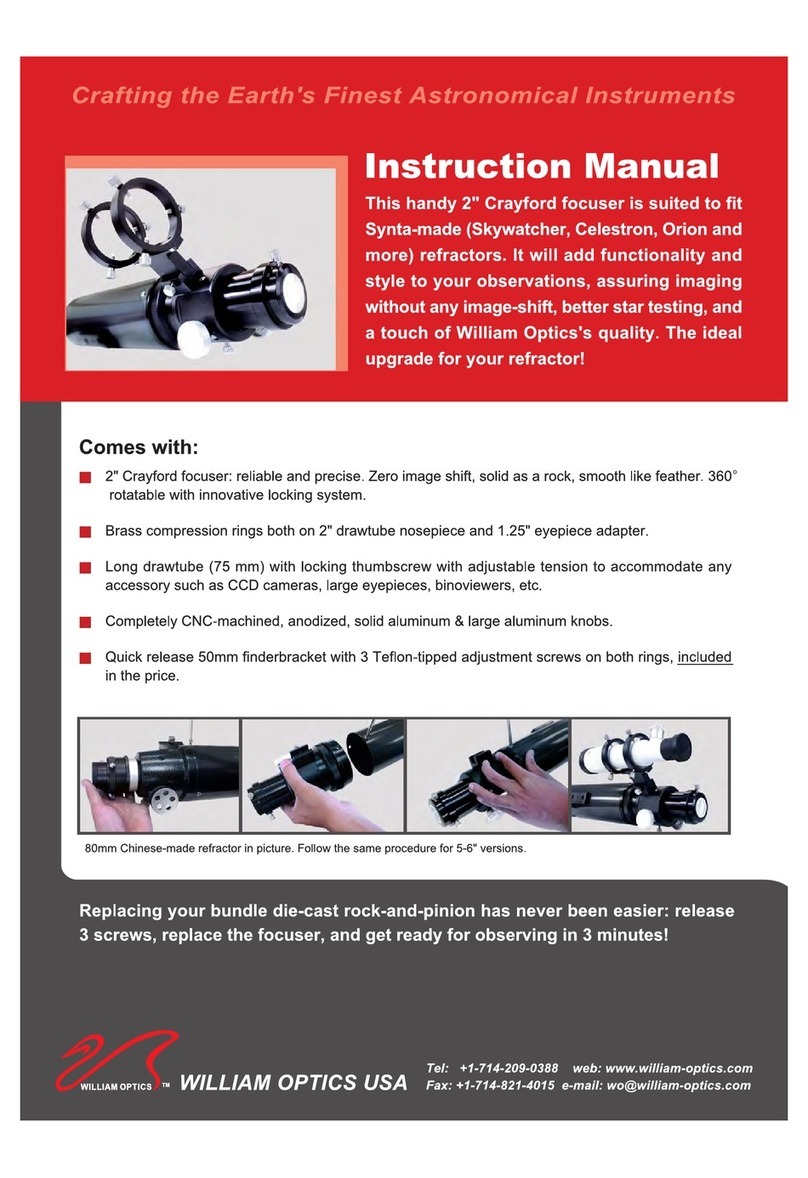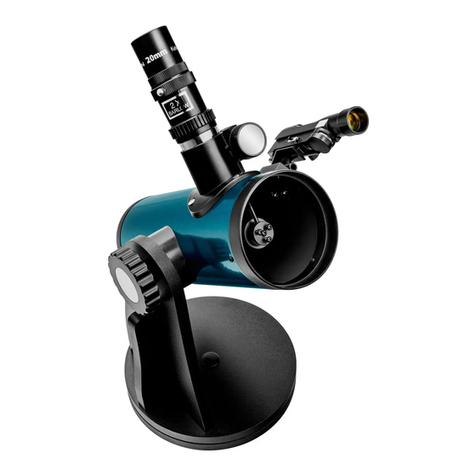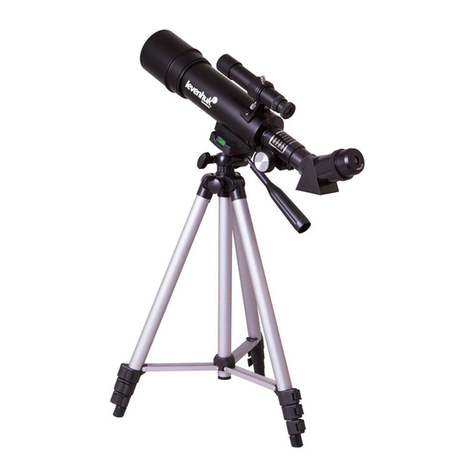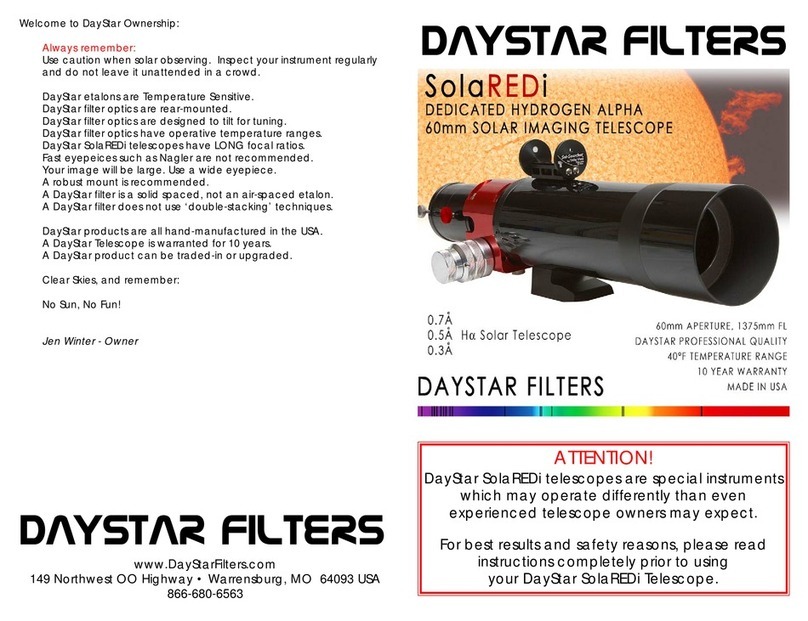#497AutoStarMenuTree ....................25
EventMenu...............................26
GlossaryMenu ............................27
UtilitiesMenu..............................27
SetupMenu...............................28
Advanced AutoStar Features
AddingObservingSites......................31
FindingObjectsNotIntheDatabase ...........32
GoToaUser-enteredObject ..................32
ObservingSatellites ........................32
HowtoCreateYourOwnGuidedTour ..........33
WritingaTour .............................34
Landmarks ...............................37
Identify . . . . . . . . . . . . . . . . . . . . . . . . . . . . . . . . . .38
Two-StarAlt/AzAlignment....................38
Browse ..................................40
Maintenance
BasicMaintenance .........................41
Collimation ...............................41
InspectingtheOptics........................43
GaugingtheMovementoftheTelescope ........43
UpdatingYourLTSeriesFirmware .............43
Meade Customer Service
How to get in contact........................43
Appendix A:
TrainingtheDrive ..........................44
Appendix B:
BasicAstronomy ...........................45
Appendix C:
Specications .............................47
Appendix D:
OpticalSystems ...........................49
Appendix E:
MeadeDoC...............................50
Meade Warranty
OneYearLimitedWarranty ........... Back Cover
®Thename“Meade,”“AutoStar”andtheMeadelogoaretrade-
marksregisteredwiththeU.S.PatentandTrademarkOfceand
inprincipalcountriesthroughouttheworld.“DeepSkyImager”,“LT
Series”,and“Tonight’sBest”aretrademarksofMeadeInstruments
Corp.
Patents:
US7,277,223,US7,079,317,US7,092,156
US6,304,376,US6,369,942,US6,392,799
©2009MeadeInstrumentsCorp.
CONTENTS
Introduction
Asolidtelescopebuiltforalifetimeofservice......4
Getting Started
Assembling the and Using the LT Telescope
AssemblingtheTripod........................5
MountingtheTripod .........................6
InstallingtheBatteries........................6
UsinganACAdapterorDCPowerCord .........6
AttachingAccessories ........................7
TelescopeisnowFullyAssembled . . . . . . . . . . . . . .7
Using the Red Dot Finder . . . . . . . . . . . . . . . . . . . . .8
AdjustingtheRedDotFinder ..................8
AligningtheLTSeries ........................9
TheLTSeriesHomePosition ..................9
NorthHomePosition.........................9
MovingThroughAutoStar’sMenus.............10
InitializingAutoStar . . . . . . . . . . . . . . . . . . . . . . . . .10
Easy(Two-Star)Align . . . . . . . . . . . . . . . . . . . . . . . 11
HowtoPerformtheEasyAlignProcedure .......11
GoToSaturn ..............................12
UsingtheGuidedTour ......................12
LT Series Key Features
Telescope
KeyFeaturesIdentiedontheTelescope ........13
KeyFeaturesExplained .....................15
Optional MEADE® Accessories
Choosing Eyepieces ........................16
MeadeSeries4000SuperPlösslEyepieces .....16
MeadeSeries5000PremiumEyepieces ........15
Power Supplies ............................18
ImagersandrelatedAccessories ..............18
AutoStar #497 Handbox – Basic Usage
Buttons, Display and their functions ............19
ObservingUsingAutoStars’Keys ..............21
ObservetheMoon..........................22
TerrestrialObserving ........................22
LTSeriesTips .............................22
AutoStar Operation
AutoStarNavigationExercise .................23
EnteringDataintoAutoStar...................24
GuidedTourMenu..........................24
ObjectMenu ..............................24
